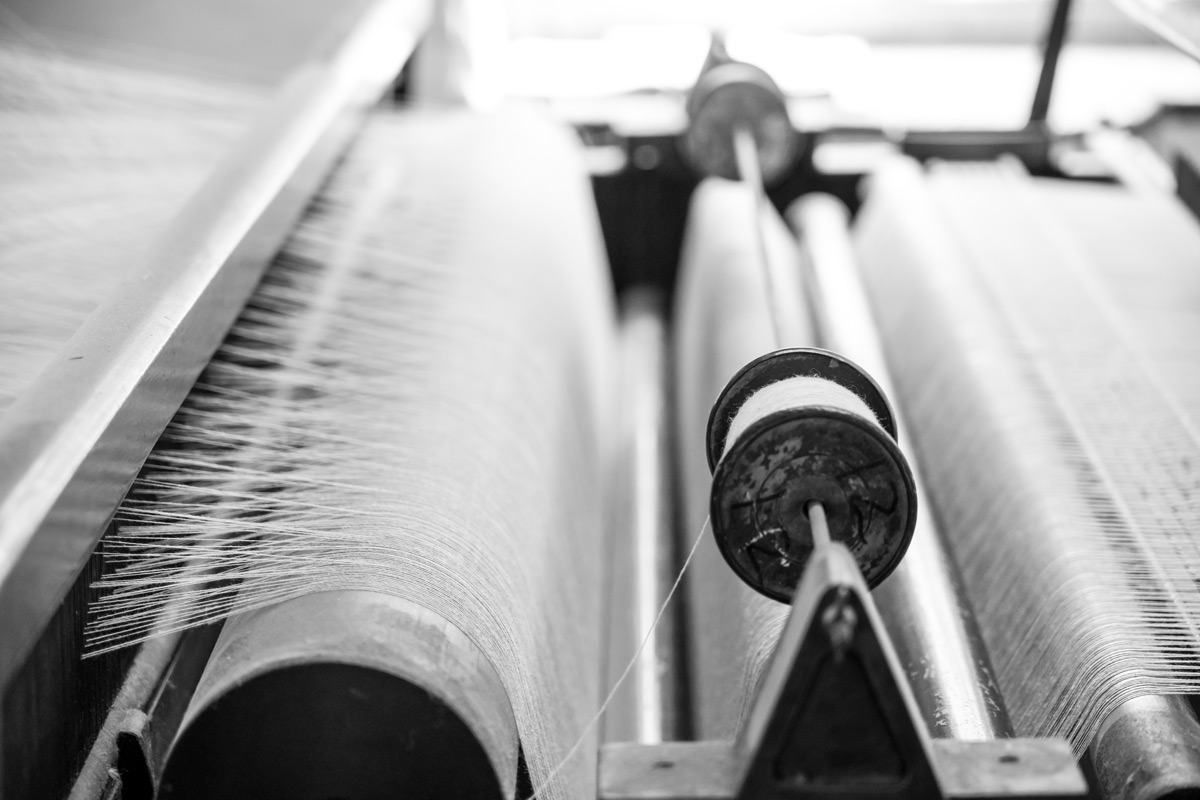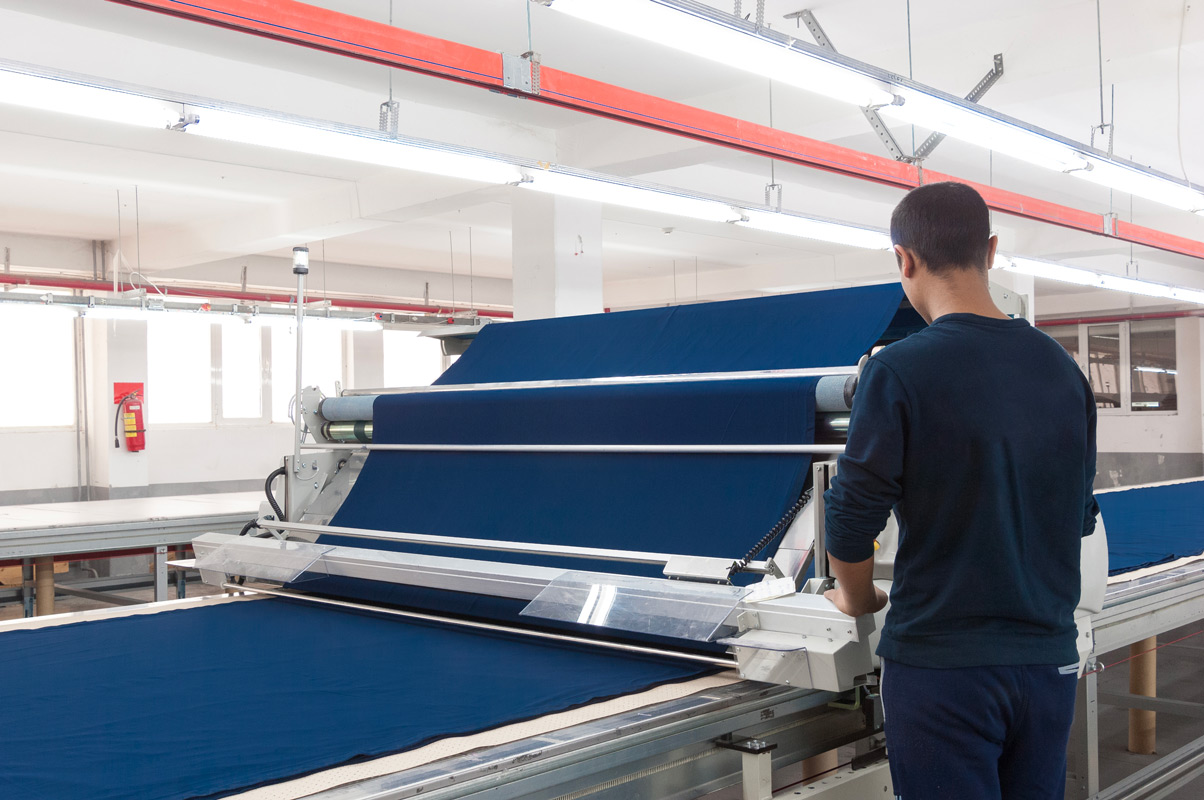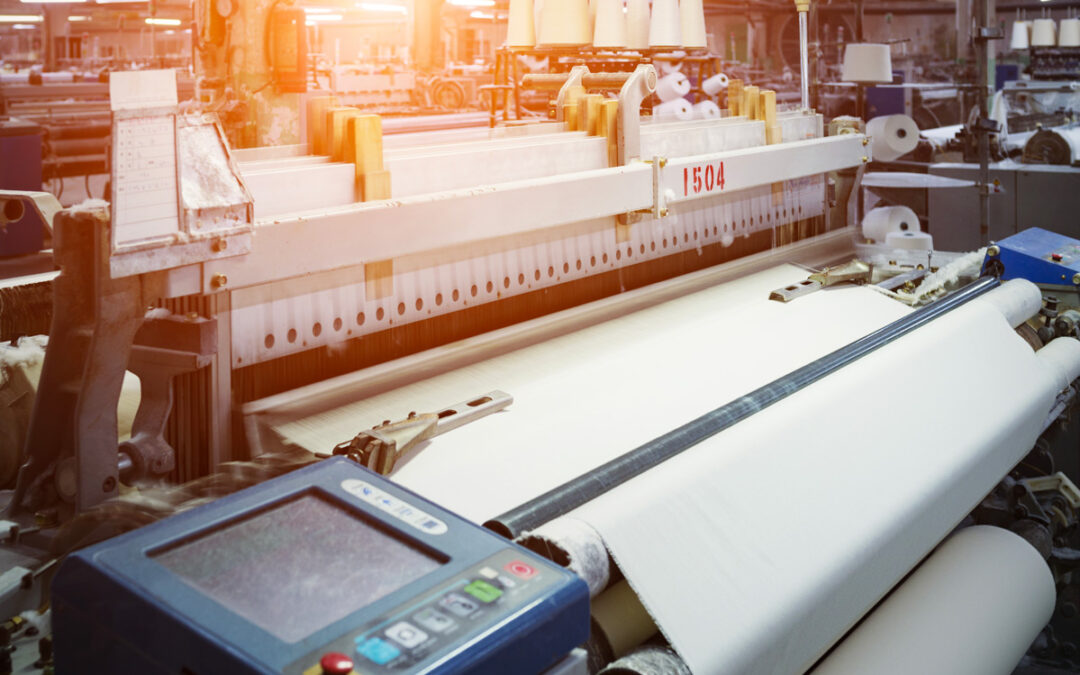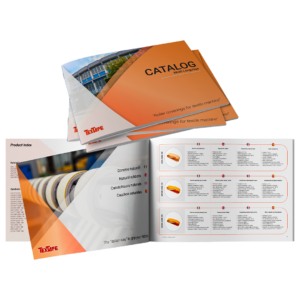Rubber roller coverings are industrial products used to coat cylinders which are parts of textile machines. They are involved in the production and transformation of natural and synthetic fibers, e.g. in the spinning, weaving and dyeing processes.
Although they may look similar at first glance, on the market there are different types of rubber roller coverings. You can find coverings made from natural rubber, synthetic rubber, PVC and silicones. The choice falls on a specific coating depending on the processes in which it need to be involved.
You don’t have to forget that the textile industry is a very complex sector, where raw materials are transformed into yarns and subsequently into fabrics. In particular, there are two fundamental operations which take place in a textile factory: spinning and weaving.
Each of these operations requires highly specialized machines and industrial tools. Depending on the fiber and the temperatures reached during processing, it will be necessary to use different materials for the coating of the machinery components.
In this article, you will find the all the differences between the main types of rubber coatings for industrial rollers. Continue reading to discover how identifying the most suitable one based on the specific needs of your industry.

Table of Contents
Textile industry: main manufacturing processes
As anticipated, the textile industry transforms raw materials that arrives at the plant into large bales. There they are then opened and processed to obtain yarns and fabrics through operations of spinning and weaving.
Spinning
Spinning is a set of operations that serves to transform textile fibers into yarn. The yarn is a very long and resistant thread collected on a spool.
In ancient times, spinning was done by hand. Nowadays, it is done in factories thanks to machines called spinning mills. This process can be summarized in these few steps:
- the cotton bale is opened and inserted into the machine, which squeezes it between pairs of rollers so as to reduce it to a very long tape;
- this textile fiber mattress is carried through other rollers. Dirt, like fragments of leaves, soil or seeds is removed. Then also shorter fibers and other impurities are removed;
- the tape is collected by other machines, where it becomes even thinner, to approach the shape of a wire.
After the pre-spinning phase, the tape is thinned more and more and wound onto the final reel.
Weaving
Another important procedure in the textile industry is weaving. During this procedure the thread is transformed into the actual fabric. Weaving is the process of combining two groups of yarn:
- warp, which is the set of threads that are placed in the direction of the length of the fabric;
- weft, that is the threads that are arranged along the width of the fabric.
Therefore, these two sets of parallel threads must be intertwined with each other. Weaving is done with a machine called loom.
As you can see, numerous cylinders are involved in the main textile industry processes. These tools need to be covered with the correct type of rubber coating to avoid continuous maintenance.

Different types of rubber roller coverings
Initially textile machines were simply made up of rotating wooden cylinders. Thanks to the introduction of electronic machinery, the textile production has become computer driven and it is possible to regulate different aspects such as the water intake, the speed, the direction of rotation, the introduction of reagent, the temperature and many more.
With this evolution in the machines, the use of rubberized rollers began. These tools have to withstand heat, humidity and many chemical factors. For this reason, it is required to coat each roller with the right rubber coating. In this way rollers can adhere better to various materials involved in the productions and ensure a high-quality result.
Let’s see more in detail all the different kinds of rubber roller coverings.
Natural rubber
Natural rubber is a product that can be obtained from the bark of a tree. It is an elastomer, a polymeric material characterized by great elasticity. Therefore, it has the ability to deform considerably if subjected to an external force and then assume its original shape again.
Natural rubber is one of the materials used as a covering for rollers. It is suitable for textile cylinders that need great adhesion on the fibers, perfect for towing polyester and polypropylene fabrics (PPP).
Nitrile synthetic rubber
On an industrial level, synthetic rubbers are one of the most used materials for a wide range of applications. Nitrile rubber is a copolymer composed of butadiene and acrylonitrile, with an acrylonitrile content of approximately 18% to 50%.
The technical features of the nitrile rubber make this material resistant to an extended range of temperatures ranging from -40° C to +108° C. It is no coincidence that this material is
suitable for applications where it requires long durability and resistance to temperatures up to 120 º C. Used in most finishing machines.
PVC
PVC is a thermoplastic and very versatile material. In fact, depending on the intended use of the final product, the production phase can confer different properties to this material, e.g. flexibility or rigidity.
In the textile industry PVC is used on textile machines that work cold, not in the presence of chemical dyes or solvents.
Silicones
Silicones are inorganic polymers based on a silicon-oxygen chain and organic functional groups bonded to silicon atoms. They stand out for their high chemical and thermal resistance, good electrical insulation, non-flammability, resistance to ultraviolet radiation and excellent lubricating power.
For these reasons, silicones roller coverings are perfect to be used at high temperatures and in the presence of oils and solvents.
Did you already know all the different kinds of rubber roller coverings listed in this article? If you enjoyed this article and find it helpful, share it with your colleagues!


